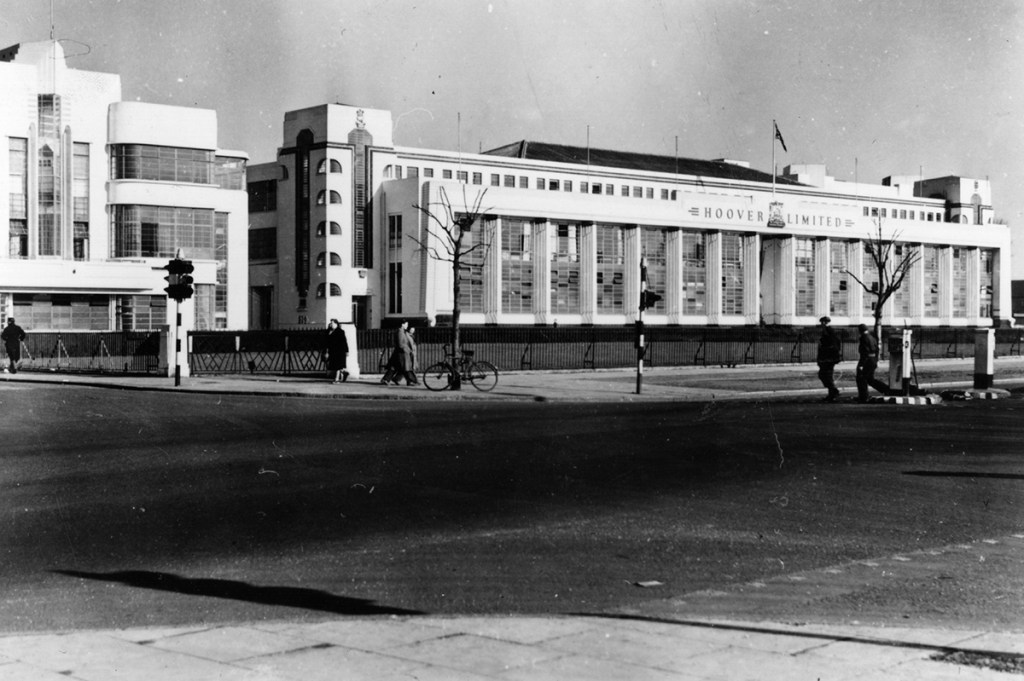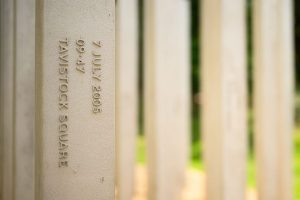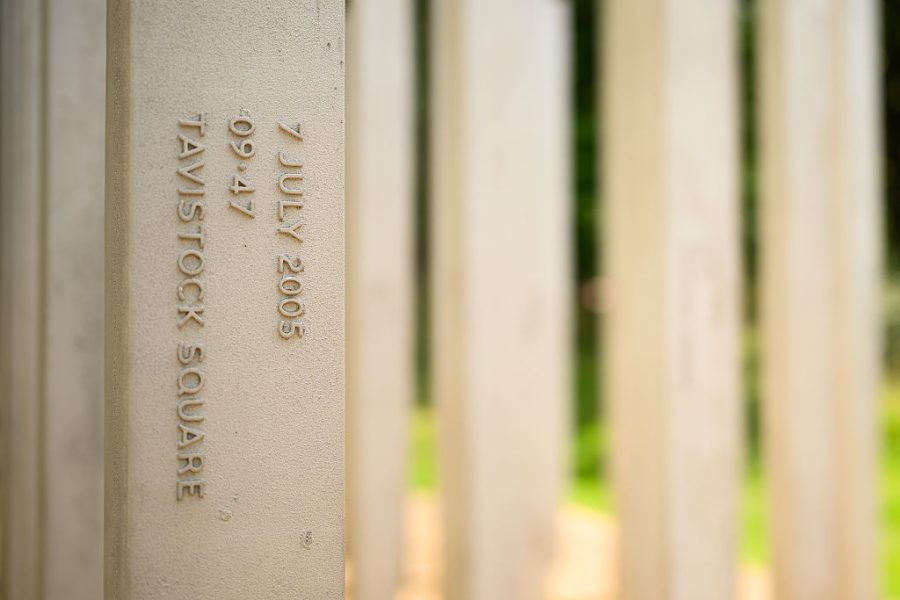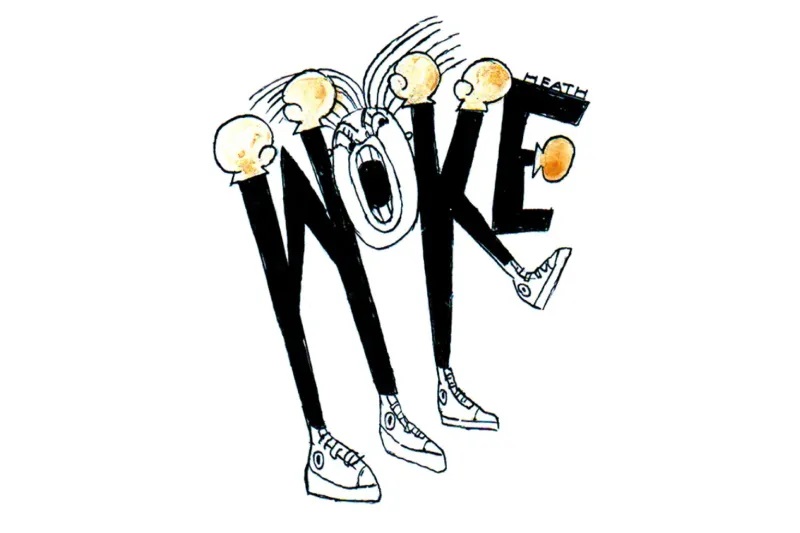In the early Thirties, when impoverished Americans were cramming into shanty towns called ‘Hoovervilles’, another Hoover created an industrial building of rare magnificence in west London.
Driving into London from Heathrow airport, we see acres of nondescript suburbs. The Hoover Building at Perivale, about five miles from the West End, still astounds. Set back from the road in well-manicured gardens, this art deco masterpiece rises in brilliant white (due to the use of a cement called Snowcrete), its façade laced with angular green trim and sunburst decoration.
The Hoover Building was the British factory of the Hoover Company, the Ohio-based vacuum-cleaner manufacturer. Its designer Thomas Wallis refused the art deco label, instead calling his style ‘Fancy’. It has an Egyptian air: Europe was then in thrall to Egyptomania, Howard Carter having unearthed King Tutankhamun’s tomb in 1922. The press called it a ‘modern palace of industry’, and they weren’t far wrong.
Work began in 1931, and the factory opened in 1935. Wallis insisted that his extravagant design was not a vanity and pointed to the positive psychological effects all this beauty had on the workers. At the time, managers wanted Taylorism (improving productivity by scientific, standardized processes and measurement). Wallis believed that science doesn’t have all the answers. We are more than productivity charts. We respond to work and life with heart as well as head, and beautiful buildings motivate us.
The sorry history of the Hoover Building reflects the trajectory of British manufacturing. Hoover vacated the building in the early Eighties. Developers pulled down other local landmarks of Thirties industrial design, such as the Firestone tire factory, just days before it was due to be saved by being listed as a historic building. In 1989, the Hoover site was partially cleared and a Tesco supermarket installed in the old factory. In 2017, the rest of the building was turned into luxury apartments.
Several other Thirties buildings from American firms survive in west London, many with similarly creative architectural pedigrees. The Gillette Building, with its high brick tower and four-faced neon clock is another art deco classic. So is the white, ocean liner-like Wrigley’s factory (British soldiers brought the gum habit back from World War One). It would have been easier and cheaper to build something purely functional, and the American elan and ambition of these buildings still speak to modern Londoners.
I grew up just down the road from Hoover, and these buildings were part of my childhood landscape. We lived in the kind of place people wanted to leave — life always seemed to be happening elsewhere — but those deco buildings added Gatsby-era glamor to our suburban lives. Whenever I drive past, the building still thrills me, and I am, again, that teenager wanting to go and live in America. In 1980, Elvis Costello released ‘Hoover Building’, a musical tribute to its beauty and influence: ‘And one of these days the Hoover factory/ Is gonna be all the rage in those fashionable pages.’
I wish he had been proved right. There is still time. Meanwhile, the British still call a vacuum cleaner ‘a Hoover’.
This article was originally published in The Spectator’s November 2020 US edition.

























